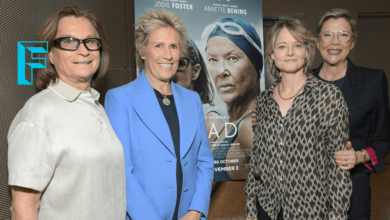Unmasking the Truth: How Humans Gather Fake Information

Introduction to the prevalence of fake information
Welcome to the shadowy world of misinformation and deception, where reality blurs with fiction, and truth is but a fleeting illusion. In an era dominated by the digital realm, fake information lurks around every virtual corner, waiting to ambush unsuspecting minds. Join us as we delve into the murky depths of how humans gather fake information and uncover the sinister forces at play in shaping our beliefs. Buckle up for a wild ride through the twists and turns of deceit as we unmask the truth behind this pervasive phenomenon.
The psychology behind believing false information

Have Humans Gather you ever wondered why some people are more susceptible to believing fake information than others? The psychology behind this phenomenon is complex and intriguing.
Cognitive biases play a significant role in shaping our perceptions and beliefs. Confirmation bias, for instance, leads us to seek out information that confirms our existing views while disregarding contradictory evidence.
Moreover, social influence can sway our opinions without us even realizing it. When we see others sharing or endorsing false information, we may be inclined to follow suit due to the bandwagon effect. Additionally, emotions like fear and outrage can cloud our judgment and make us more vulnerable to accepting sensationalized or misleading content.
Understanding these psychological factors is crucial in combatting the spread of fake news.
By being aware of our own cognitive biases and staying vigilant against emotional manipulation, we can become better equipped to discern truth from fiction.
The role of social media in spreading fake news
In today’s digital age, social media platforms have become powerful tools for spreading information rapidly. Unfortunately, this also includes the dissemination of fake news and misinformation. With just a click, false stories can reach millions of people within seconds.
Social Humans Gather media algorithms often prioritize sensational or controversial content, regardless of its accuracy. This can lead to the viral spread of fake news before it’s even fact-checked. The ease and speed at which information is shared on social media make it challenging to distinguish between what is true and what isn’t.
Additionally, individuals tend to follow like-minded people and sources on social media, creating echo chambers where fake news can thrive unchecked. These echo chambers reinforce existing beliefs and biases, making it harder for users to critically evaluate the information they encounter online.
To combat the spread of fake news on social media, users must practice digital literacy skills such as fact-checking sources, verifying information before sharing it further, and diversifying their news consumption beyond their usual feeds. It’s crucial to be vigilant in navigating the vast sea of information online responsibly.
Impact of fake information on individuals and society
Fake information can have devastating consequences on individuals and society as a whole.
When Humans Gather people believe false news, it can lead to confusion, fear, and even harm. Individuals might make decisions based on inaccurate information, affecting their well-being or relationships.
On a larger scale, When Humans Gather people believe false news, it can lead to confusion, fear, and even harm. Individuals might make decisions based on inaccurate information, affecting their well-being or relationships.the spread of fake news can create societal divisions and mistrust among communities. It can manipulate public opinion, influence elections, or incite violence. The erosion of trust in reliable sources affects the fabric of society’s communication and decision-making processes.
Moreover, Humans Gather the proliferation of fake information online contributes to a culture of misinformation where facts are blurred with fiction. This challenges the very foundation of democracy and informed citizenship by distorting reality and promoting biased narratives.
Combating fake Humans Gatherinformation requires vigilance from both individuals and platforms responsible for disseminating content. Fact-checking sources before sharing information is crucial in preventing the harmful effects of fake news on individuals’ lives and society at large.
How to identify and combat fake information
In today’s digital age, identifying and combatting fake information is crucial for maintaining an informed society. One way to spot fake news is by checking the credibility of the source.
Be wary of sensational headlines or sources with a history of spreading misinformation.
Take the time to fact-check by cross-referencing information with reliable sources. Look out for any inconsistencies or lack of evidence in the content you come across. Remember, not everything you see online is true.
Combatting fake information involves being proactive in educating yourself and others about media literacy. Encourage critical thinking skills and promote healthy skepticism when consuming news or articles.
Stay vigilant against confirmation bias by seeking out diverse perspectives on a topic before forming an opinion. By fostering a culture of questioning and verification, we can collectively work towards minimizing the spread of false information.
Case studies of infamous instances of fake news
In recent years, there have been several high-profile cases of fake news spreading like wildfire. One notable example is the “Pizzagate” conspiracy theory, which falsely claimed that a Washington D.
C. pizza restaurant was involved in a child trafficking ring.
Another infamous instance is the spread of misinformation during the 2016 U.
S. presidential election, where false stories and propaganda were widely shared on social media platforms.
The case of Andrew Wakefield’s fraudulent study linking vaccines to autism is another striking example of how fake information can have serious consequences on public health and safety.
More recently, deepfake videos have emerged as a concerning trend, with manipulated content being used to deceive viewers and spread false narratives online.
These cases serve as stark reminders of the importance of critically evaluating information before believing or sharing it with others. It highlights the need for media literacy and fact-checking to combat the proliferation of fake news in today’s digital age.
Conclusion: Importance of critical thinking and reliable sources
In a world where fake information can easily deceive and manipulate, it is crucial for individuals to sharpen their critical thinking skills and rely on reliable sources. By questioning the validity of information, fact-checking before sharing, and seeking out credible Unmasking the Truth: How Humans Gather Fake Information sources, we can combat the spread of misinformation.
The power to unmask falsehoods lies in our hands. Let us embrace a mindset of skepticism towards what we encounter online, empowering ourselves with the tools needed to discern truth from fiction. Together, we can strive towards a more informed society built on a foundation of accuracy and integrity.




